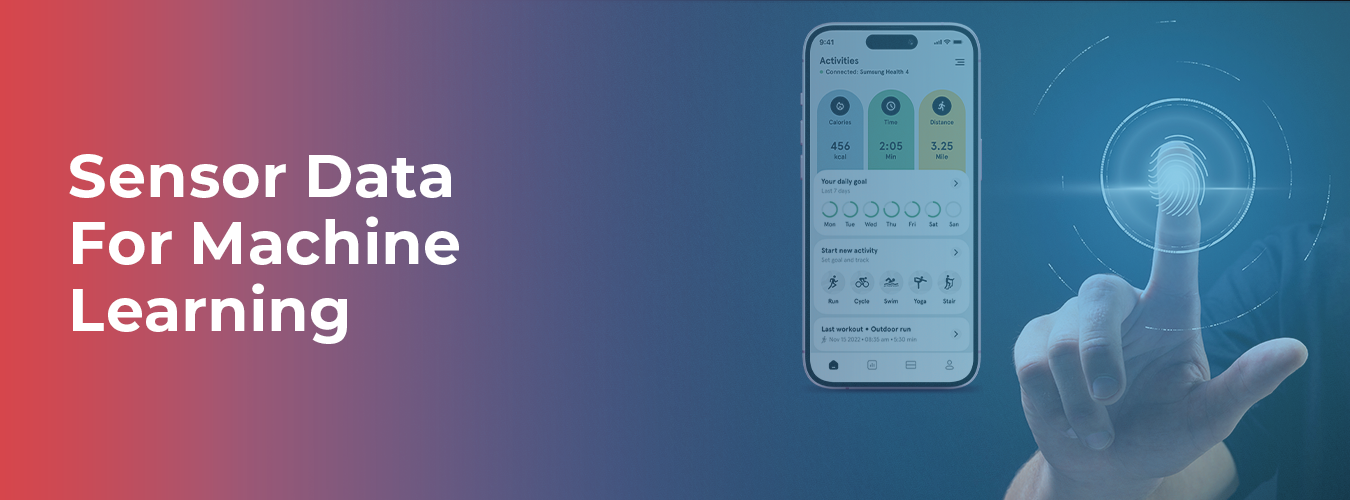Computer Vision, where machines seamlessly interpret and interact with the visual world, reshaping the landscape of artificial intelligence. In this post, we unravel the intricacies of Computer Vision, exploring its profound impact on tasks replicating human capabilities, from object recognition to real-world applications. By delving into the role of machine learning, deep learning, and convolutional neural networks, we decipher how Computer Vision mimics human vision systems, enabling systems to evolve and learn continuously.
Understanding Computer Vision

Computer vision is a field of computer science that focuses on enabling computers to identify and understand objects and people in images and videos. Like other types of AI, computer vision seeks to perform and automate tasks by replicating human capabilities. In this case, computer vision aims to replicate how humans see and make sense of what they see.
The range of practical applications for computer vision technology makes it a central component of many computer vision services and solutions.
How computer vision works

Computer vision services and solutions use input from sensing devices, artificial intelligence, machine learning, and deep learning to replicate how the human vision system works. Computer vision training data run on algorithms trained on massive amounts of visual data or images in the cloud. They recognize patterns in this visual data and use those patterns to determine the content of other images.
With the help of pre-programmed algorithmic frameworks, a machine learning system may automatically learn about visual data interpretation. The model can learn to distinguish between similar pictures if it is given a large enough dataset. Algorithms allow the system to remember independently to replace human labor in tasks like image recognition.
Training data for Computer Vision aids machine learning and deep learning models in understanding by dividing visuals into smaller sections that may be tagged. With the help of the tags, it performs convolutions and then leverages the tertiary function to make recommendations about the scene it is observing. With each cycle, the neural network performs convolutions and evaluates the integrity of its recommendations. And that’s when it starts perceiving and identifying pictures like a human.
Computer vision capabilities
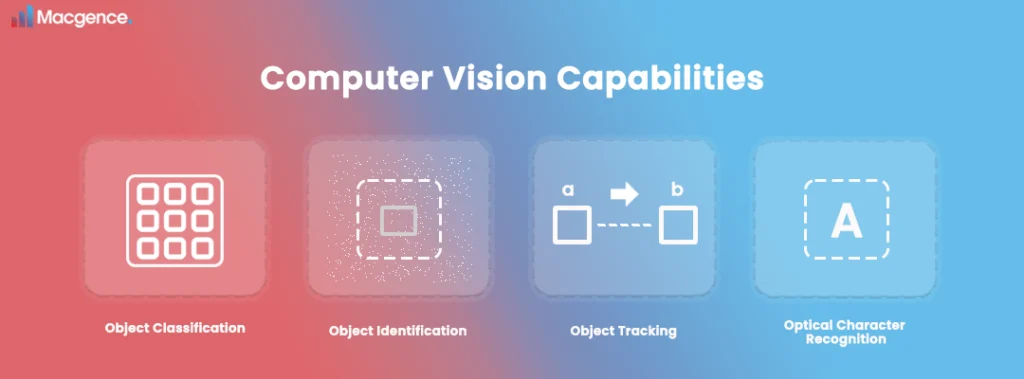
There are three main functions for how computer vision programs process images and return information:
Object classification
The system classifies the objects in an image according to a defined category. For example, with object classification, a computer could distinguish people from objects in a photo and determine how many people appear.
Object tracking
The system analyzes a video to process the location of a moving object over time. For example, with object tracking, a parking lot surveillance camera could identify cars in a parking lot and provide information about the location and movements of those cars over time.
Optical character recognition
The system identifies letters and numbers in images and converts that text into machine-encoded text that can be read by other computer applications or edited by users.
What computer vision is used for?
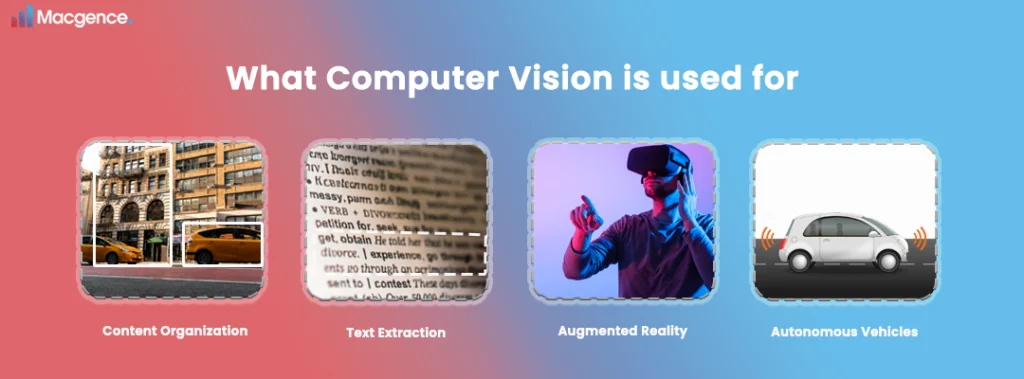
It is a powerful capability that can be combined with many applications to support several practical use cases. Here are just a few different types of computer vision applications:
Content organization
Computer vision can identify people or objects in photos and organize them based on that identification. Photo recognition applications like this are commonly used in photo storage and social media applications.
Text extraction
Optical character recognition can boost content discoverability for information contained in large amounts of text and enable document processing for robotic processing automation scenarios.
Augmented reality
Computer vision detects and tracks physical objects in real-time. Developers then use this information to realistically place virtual objects in a physical environment.
Autonomous vehicles
Self-driving cars use real-time object identification and tracking to gather information about what’s happening around a vehicle and route the car accordingly.
Challenges of Computer Vision
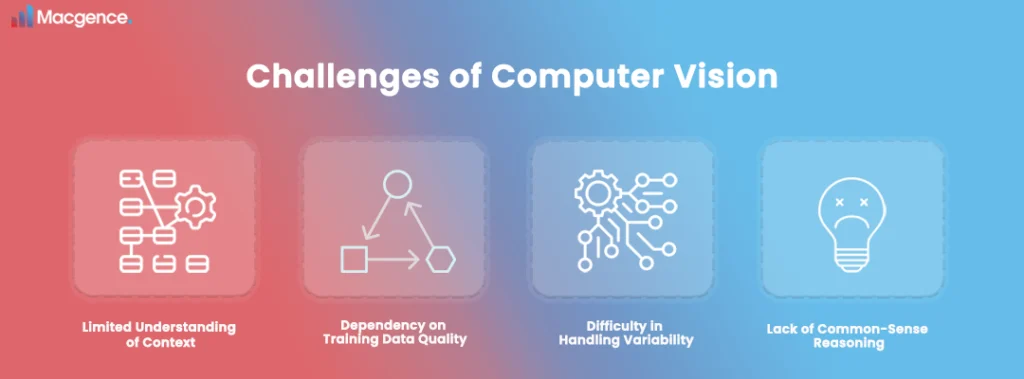
Limited Understanding of Context
Computer Vision systems often struggle to grasp a scene’s broader context. While they can recognize objects and patterns, understanding the tricky relationships and nuances in a complicated environment remains challenging.
Dependency on Training Data Quality
The overall performance of Computer Vision models heavily relies on the quality and diversity of the training data. If the training data is biased, complete, and has more diversity, the model might produce faulty or skewed results, restricting its applicability.
Difficulty in Handling Variability
Computer Vision systems may need help with variations in lighting conditions, viewpoints, or image resolutions. Adapting to these variations is complex, making the models less robust in dynamic and unpredictable eventualities.
Lack of Common-Sense Reasoning
Compared to human beings, Computer Vision systems frequently lack common-sense reasoning abilities. They might also need to be more accurate in comprehending conditions that humans effortlessly navigate through, as they lack the broader knowledge and contextual understanding that humans possess.
What sets Macgence apart from others?
Our high-quality computer vision training data exposes the model to diverse and representative visual examples encountered in real-world scenarios. This dataset aims to reduce biases within computer vision models by ensuring a balanced representation and minimizing any associations with specific groups or characteristics.
The impact of Macgence’s quality computer vision training data is directly reflected in the successful deployment and application of computer vision models in real-world situations. By providing diverse inputs, our datasets significantly enhance the likelihood of the model delivering meaningful and reliable results.
We integrate various situations and edge cases into the training data to fortify the computer vision model. This approach ensures that your AI model becomes more adept at adapting to different backgrounds, lighting conditions, object orientations, and other real-world elements throughout the training process for computer vision.
Why Macgence is your one-stop solution?
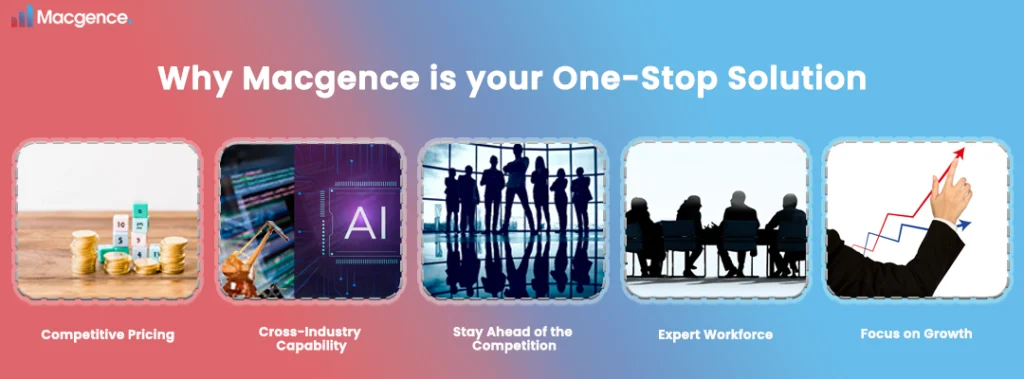
Competitive Pricing
As experts in training and managing teams, we ensure that we deliver projects within the defined budget.
Cross-Industry Capability
The team analyzes data from multiple sources & is capable of producing AI-training data efficiently and in volumes across all industries.
Stay ahead of the Competition.
The vast amount of image data provides AI with copious information needed to train faster.
Expert Workforce
Our pool of experts proficient in image/video annotation and labeling can procure accurate and effectively annotated datasets.
Focus on Growth
Our team helps you prepare image/video data for training AI engines, saving valuable time & resources.
Conclusion

In conclusion, the journey through Computer Vision has illuminated the transformative impact it holds on the field of artificial intelligence. From the limited understanding of context to the dependency on the quality of computer vision services and solutions along with computer vision training data, handling variability, and the lack of common-sense reasoning, these hurdles underline the evolving nature of Computer Vision.
FAQs
Ans: – Computer vision is a computer science field that enables computers to identify and understand objects and people in images and videos. Like other types of AI, computer vision seeks to perform and automate tasks by replicating human capabilities.
Ans: – With the help of advanced cameras and picture processing algorithms, computer vision systems for facility management can examine photographs and videos of large public spaces. This provides precious insights into the operations of the facility.
Ans: – Different styles of computer vision include image segmentation, object detection, facial recognition, edge detection, pattern detection, image classification, and feature matching.


